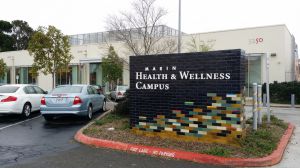At any given time, 75 to 100 Marin County children in the child welfare system require foster care, according to Marin Health & Human Services.
Foster children in Marin range from newborns to 18-year-olds, from victims of abuse and neglect to children who lived in unsafe living conditions, and from children needing temporary care to foster adoption, according to Wasserman.
Throughout the years, the number of foster children requiring care who are unable to receive foster parents has increased due to a lack of foster parents, according to Cindy Wasserman, the Licensing Worker and Child Welfare Worker at Marin Health and Human Services.
According to Wasserman, there are more people retiring and not enough people who are becoming foster parents.
The reason why there have been fewer foster parents entering the system within the recent years has been unclear, according to Linda Gregory, Executive Director of the Marin County Foster parent Association. However, Wasserman offered one potential explanation: a lack of awareness.
“I think in Marin County, not enough people are aware that we need foster parents,” Wasserman said. “Foster parents tend to come more readily when they see other people doing it. And if you don’t know other kids in the foster care system and you don’t know other people who are foster parents, then it comes less visible.”

Gregory added that the economy worsening over the past few years is another potential factor. Wasserman said that it can be expensive to foster a child.
“Housing is very expensive… it can be hard to come upon homes that have an extra bedroom,” Wasserman said.
If a child is in an unsafe situation, then a court decision can be made to put the child into foster care.
According to Barbara Sabido, many of these children have experienced some sort of physical, emotional, or sexual abuse or neglect.
“Kids are put in foster care because they are not safe in the situation that they’re in. And that can be because of drug or alcohol abuse by their parents – that’s a pretty common one in Marin – or abuse or neglect,” Gregory said.
“And it can be neglect [such as] inadequate supervision, unsanitary home environment, [or] not enough food for the child,” said Wasserman.
Wasserman, added, however, that not all foster children have been abused.
“Sometimes the child was not abused or neglected; sometimes the parents just have a health issue that needs to be addressed,” said Wasserman. “Some seek medical care, whether it be mental health care or long-term hospitalization.”
According to Wasserman, children often blame themselves for being put into foster care, whether or not it is truly their fault.
“The average stay for a foster child is anywhere from [six] to 12 months. But I’ve had a foster child in my home for 24 hours and had two for two years,” said Sabido.
According to Sabido the ultimate goal of foster care is reunification.
“About 75 percent of the time, the families do get reunited,” Wasserman said. “The exception to that are teenagers. They sometimes choose to stay in foster care.”
Children who require foster adoption require a temporary or permanent home (depending on the child’s needs) and seek a new family that will support them and provide for them sufficiently.
“[Sometimes] teens find a situation they like and have their foster parents become their guardians,” Gregory said.
“Marin County does have a foster care shelter, and it only has the capacity for [five],” said Sabido, a local foster parent. This forces children in the foster care system to instead stay with other family members – who may not necessarily be completely adequate in taking care of them – until a foster parent is available for them.
Marin is requiring more and more Spanish-speaking foster parents to accommodate for all the children who only or primarily speak Spanish.
The organizations address the issue by surveying the applicants and potential candidates whether or not they speak Spanish.
The Marin Health & Human Services hold an orientation for parents who seek to become a foster parent every month. The next orientation is on April 21 at Room 110, 3240 Kerner Blvd, San Rafael.






